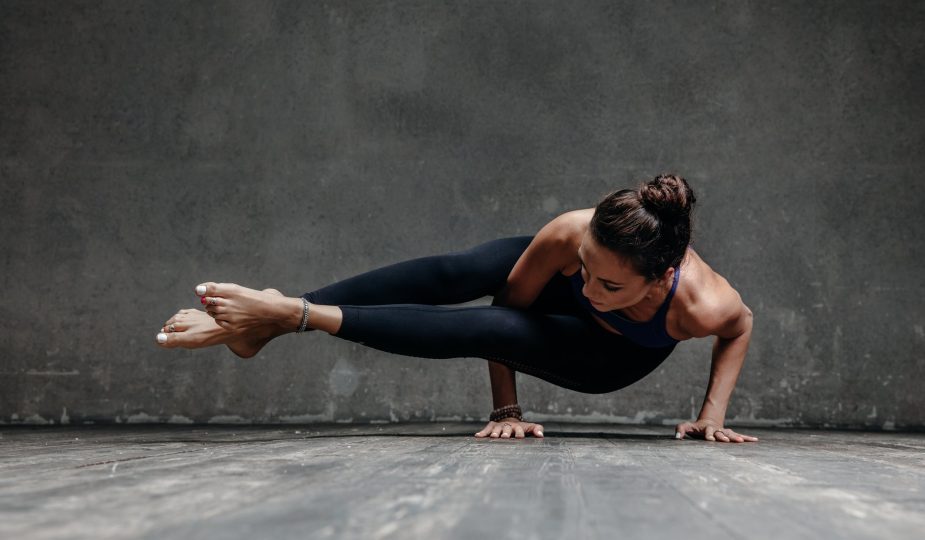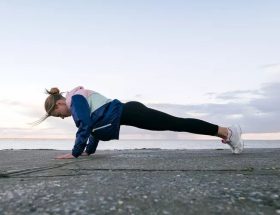Are Frog Jumps the Missing Move in Your Workout?
Acardio, strength, and mobility movement rolled into one, frog jumps are a plyometric (jump training) exercise that works your lower body. As the name hints, you jump or “hop” in place like a frog, which sounds simple enough. But think again.
Frog jumps are a challenging workout designed to spike your heart rate, put your thighs and glutes to the test, and build on your power and speed. Aside from this, the movement naturally works many joints at once, which can improve the mobility of your ankles, hips, and knees, as well as building strength in the lower back.1
Steps To Create The Perfect Bath
This no-equipment exercise can be performed anywhere with space, and will torch many calories in a matter of minutes.
Ready to give it a try? Read on to see what our experts have to say.
Mindy Lai is an instructor at bande.
Josh Honore is a NASM-certified personal trainer and XPRO for STRIDE GO and Row House GO.
What Are Frog Jumps?
According to Josh Honore, trainer at XPRO for STRIDE GO and Row House GO, frog jumps are a dynamic exercise that will condition your muscular and cardiovascular endurance, and also serve as a powerful body-weight exercise.
Cardio: “The up-and-down movement of frog jumps will elevate your heart rate, and the faster you move, the more your cardiovascular system is challenged to keep up with the pace,” explains bande instructor Mindy Lai.
Lower-body strength: Your lower body is charged to propel you into the air at speed and poised to land in a low squat position with full control. That involves a lot of muscle!
Core: Think of your core as your stabilizer during this movement, contracting to ensure a soft landing and keeping you safe from injury.
Mobility: “The repetitive motion of full flexion and extension wakes up the lower-body muscles and works them to their limit,” explains Lai. The movement pattern of the frog jump can therefore enhance your jumping performance and ability to create power from a low squat position.
How to Frog Jump
Frog jumps require meticulous form to ensure your weight is properly distributed, and to avoid injury of the joints and back.
Start with a straight back, feet shoulder-width apart, and engage your core, keeping it active throughout the exercise
Push your glutes back and lower down into a squat position until you can touch the ground (or close enough), making sure your knees are tracking over your toes
At the bottom of the movement, push the floor away with your feet (from your heels) and leap up into the air with power, feeling the stretch and straightening of your hips, knees, and ankles in one line from your shoulders
Keep those arms reaching toward the ground as best as you can. You want to isolate the legs without help from the arms
As you lower to the ground, think of a frog sitting on a lily pad as a reminder of proper form.
Modifications
If you prefer less impact and an easier landing on the joints, you can take away the jump and reach your arms down (rather than touching the ground) during the squat phase.
“You can also perform a static squat with a calf raise,” suggests Honore. “Or if it’s a case of your back rounding, begin in a shallower squat to keep the power in the hips.”
For a more intense frog jump, you can add movement by propelling the body forward a few feet midair, and then back to the starting position.
Safety Considerations
Frog jumps require a strong core and mobile joints to perform with proper form. And let’s not forget, this exercise is high impact and intense. “Frog jumps therefore may be suboptimal for anyone with recent injury of the knees or back, so if this is the case, make sure a doctor has approved you to perform high-intensity exercise,” warns Honore.
This exercise places direct pressure on major joints, so even if you are not injured, you need to be mindful of form at all times. “If you do have any pain in the hips, knees, ankles, and feet, only bend to a position that won’t cause pain, and don’t push it further,” Lai says, adding: “Also, make sure you have ample space and an even floor, your feet clear of any obstacles, and with a high-enough ceiling for jumping.”
As for all impact workouts, good-quality shoes designed for high-impact fitness are also important.
Even without injury, keep in mind that frog jumps require a full range of motion, so if this type of movement is new to you, start by practicing your squat and the arm movement before adding in the jump.
Exercise should never be physically painful, so if something feels off during a workout, listen to your body and stop. With proper form, such a movement should not cause any pain.
The Takeaway
Frog jumps are a dynamic, plyometric exercise that combine cardio, strength, and mobility in one movement. The explosive, energetic nature of this workout burns many calories in a short time. Frog jumps have a place in HIIT, cardio, or strength routines, or can be thrown in as a “finisher.”
Keep in mind, frog jumps require a degree of flexibility and strength, so be certain you are able to squat down and reach toward the floor with perfect form before adding in the jump. Or you can modify by performing a shallower squat with a calf raise, before building up to a jump.
As frog jumps are high-impact and place weight on the joints, you should avoid them if you suffer from any injuries or pain in the ankles, knees, hips, or lower back.










